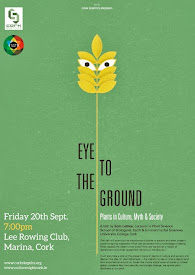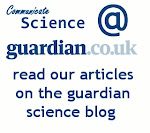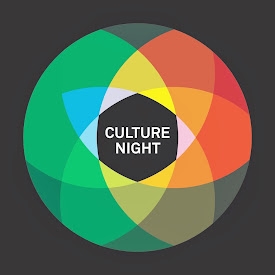BBC Science Club and Plant Blindness
The latest episode of Dara O'Briain's Science Club on BBC was all about extinction. The problem is, they seem to have killed off the plants before they even got started with the show.
The programme itself was excellent. The series has been largely well received and the move to a 'Topgear-style' format gives it a nice edgy and interactive feel to it. Dara O'Briain has also been engaging as our amusing guide to all things scientific.
My problem is that this week's episode was entirely zoocentric, without any mention of threatened plant species and their importance to the overall ecosystem.
There was an excellent studio piece on the African Clawed Frog and their former use as a rudimentary pregnancy test. Then we had a report on the Giant Panda and whether such "charismatic megafauna" are worth trying to save. We looked at the humble bee and also managed to find time to make a comet. All interesting TV but no mention of plants at all when talking about extinction? That seems a bit odd.
An EU report from 2008 showed that Europe is home to about 12,500 species of vascular plants (flowering plants, conifers and ferns). A staggering 21% of these species are threatened, according to the IUCN and 50% of plants which are only found in Europe are in danger of extinction. The main threats to Europe's wild plants are habitat loss, the introduction of alien species, the effect of pollution, the introduction of plant pests and diseases, and the effect of climate change. And that's just Europe alone!
It would have been nice to see the threat of extinction for plant species being discussed. After all, the solution to human-mediated extinction of animals is unlikely to be found without considering the overall impact of the environment the animal is living in and the plants which they are using for food and cover. It's all connected.
It seems, while outlining the the problem of conservationists becoming distracted from the bigger picture by the Giant Panda and other charismatic megafauna, the programme makers got distracted from looking at extinction in a broad sense and took the animal route alone.
I guess we can chalk this up as an example of 'Plant Blindness' a term coined to describe the inability of some to see the importance of plants in their lives and to the natural world in general. I talk about the importance of avoiding plant blindness in an article in the Winter edition of Walton Magazine. You can read it for yourself here.
Below, a clip from Tuesday's show: A Dodo's Guide to Extinction
The programme itself was excellent. The series has been largely well received and the move to a 'Topgear-style' format gives it a nice edgy and interactive feel to it. Dara O'Briain has also been engaging as our amusing guide to all things scientific.
My problem is that this week's episode was entirely zoocentric, without any mention of threatened plant species and their importance to the overall ecosystem.
There was an excellent studio piece on the African Clawed Frog and their former use as a rudimentary pregnancy test. Then we had a report on the Giant Panda and whether such "charismatic megafauna" are worth trying to save. We looked at the humble bee and also managed to find time to make a comet. All interesting TV but no mention of plants at all when talking about extinction? That seems a bit odd.
An EU report from 2008 showed that Europe is home to about 12,500 species of vascular plants (flowering plants, conifers and ferns). A staggering 21% of these species are threatened, according to the IUCN and 50% of plants which are only found in Europe are in danger of extinction. The main threats to Europe's wild plants are habitat loss, the introduction of alien species, the effect of pollution, the introduction of plant pests and diseases, and the effect of climate change. And that's just Europe alone!
It would have been nice to see the threat of extinction for plant species being discussed. After all, the solution to human-mediated extinction of animals is unlikely to be found without considering the overall impact of the environment the animal is living in and the plants which they are using for food and cover. It's all connected.
It seems, while outlining the the problem of conservationists becoming distracted from the bigger picture by the Giant Panda and other charismatic megafauna, the programme makers got distracted from looking at extinction in a broad sense and took the animal route alone.
I guess we can chalk this up as an example of 'Plant Blindness' a term coined to describe the inability of some to see the importance of plants in their lives and to the natural world in general. I talk about the importance of avoiding plant blindness in an article in the Winter edition of Walton Magazine. You can read it for yourself here.
Below, a clip from Tuesday's show: A Dodo's Guide to Extinction


























2 comments:
Hi Eoin,
I agree! I like the show generally, but it's seriously zoocentric. Episode 4, on space exploration, missed two great opportunities to include plants. First, they should have mentioned the effects of space, including zero gravity, on PLANTS, which would have to be grown to supply food for other-world colonists (and there is a LOT of research on this topic to draw from!).
But the part that really pushed me over the edge was the discussion about non-Earth based life, which was presented as if life equals animal (eyes and brains!). Astrobiologists look at how extra-terrestrial life forms would get energy (e.g. photosynthesis), not admire themselves in the mirror. Grrrrr!
Thanks for giving me a forum to vent my frustration :)
(@PlantTeaching)
Yes! And not only should plants have been mentioned, a bit of digging would have revealed that plants in fact have earned ‘pride of place’ in space.
One shining example stems from work done by Dr. Paul H. Williams, Professor Emeritus of the University of Wisconsin-Madison in coordination with the National Aeronautics and Space Administration (NASA). In May of 1995, the presidents of the United States and Ukraine issued a joint statement on cooperation in space, directing NASA and the National Space Agency of Ukraine to cooperate on a joint Space Shuttle mission. NASA managers had to decide whether a space welding demonstration or experiments in plant space biology would have greater relevance. The decision tipped in the favor of plant space biology because experiments with Fast Plants could support NASA’s missions in education and outreach as well as research by engaging the public in the scientific process. As a result, Dr.Williams developed a middle and high school hands-on curriculum that adapted the shuttle’s in-flight experiment to the classroom. The full project involved AstroPlants, a special dwarf variety that was developed through selective breeding by Dr. Williams of his FastPlants stock (see below).
This important, peace-promoting space mission allowed more than 200,000 students in the United States to join 20,000 students working with the Ukrainian version of the curriculum.
In the years since, Dr. Williams has made significant and lasting contributions to increase public understanding of science. He has been a leader in creating and disseminating a variety of education and training programs that reach students and teachers as well as developing tools for helping members of the public learn that science is an ongoing enterprise aimed at studying how we know what we know. Most specifically, Dr. Williams has developed the FastPlants (www.fastplants.org) program. This rich, inquiry-based, FREE resource for teachers and students includes an impressive list of other plants-in-space options and opportunities at http://www.fastplants.org/activities/fast_plants_in_space.php paired with classroom-based explorations with plants.
Post a Comment